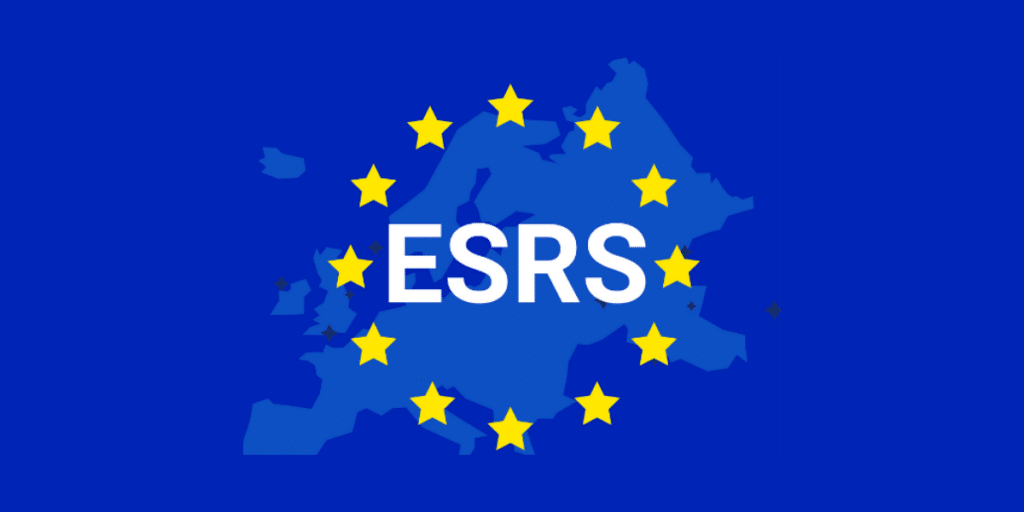Standards Structure of the ESRS Reporting
The European Sustainability Reporting Standards (ESRS) form the framework for sustainability reporting within the Corporate Sustainability Reporting Directive (CSRD). These guidelines are designed to help companies report transparently and consistently on environmental, social and governance (ESG) factors. This document provides an in-depth overview of the structure of the ESRS reporting, with detailed explanations of the various standards.
What are the ESRS?
The European Sustainability Reporting Standards (ESRS) are a set of guidelines that companies must follow to report their sustainability information. They include obligations for reporting environmental, social and governance (ESG) factors. The ESRS are divided into:
Cross-cutting Standards
ESRS 1 - General Requirements
- Describes the basic principles and general requirements for sustainability reporting, including the principle of dual materiality.
- Includes guidelines for assessing sustainability themes based on impact and financial materiality.
- Specifies reporting areas such as governance, strategy, and impact, risk and opportunity management.
- Requires transparency about the value chain and how companies deal with indirect sustainability implications.
- Covers qualitative characteristics of information, such as comparability, verifiability, and comprehensibility.
- Defines the due diligence approach and the integration of sustainability into the decision-making process.
- Describes the structure of the sustainability statement and the coherence with other parts of company reports.
ESRS 2 - General Explanations
- Includes mandatory reporting requirements for governance, strategy, and risk management.
- Specifies requirements for policies, objectives, and performance indicators.
- Serves as a basis for structuring reports within the thematic standards.
- Requires companies to explain their risk management and the impact of sustainability themes on their business strategy.
- It covers the concept of dual materiality analysis and how companies should apply it.
Thematic Standards
Environment (E)
- ESRS E1: Climate Change — Reporting on CO2 emissions (Scope 1, 2 and 3), reduction targets, climate risks and financial impact of climate change.
- ESRS E2: Pollution — Measures and describes the impact of air, water and soil pollution from business activities, including reduction plans and regulatory compliance.
- ESRS E3: Water and Marine Resources — Requires insight into water consumption, discharges, water scarcity risks and impacts on marine ecosystems.
- ESRS E4: Biodiversity and Ecosystems — Analyses the impact of business activities on biodiversity, including risk management and remedial actions.
- ESRS E5: Resource Use and Circular Economy — Emphasizes resource efficiency, circular business models and waste reduction strategies.
Social (S)
- ESRS S1: Own employees — Reporting on working conditions, safety, wages, diversity, inclusion and social dialogue.
- ESRS S2: Workers in the Value Chain - Assessment of labor rights, working conditions and compliance with social standards in the supply chain.
- ESRS S3: Affected communities — Impact analysis of business activities on local communities, including social cohesion and compensation measures
- ESRS S4: Consumers and End Users — Reporting on Product Safety, Privacy Protection, Customer Satisfaction, and Ethical Marketing
Governance (G)
- ESRS G1: Business Conduct — Description of legal compliance, ethical business, anti-corruption, tax transparency, and data protection.
- Transparency about governance structures, remuneration policies and compliance programs.
- Obligations related to supply chain due diligence and integrity in business relationships.
Minimum Required Disclosures (MDR)
The ESRS standards include Minimum Disclosure Requirements (MDR) that require companies to report policies, actions, objectives, and performance indicators. They include revelations about policies, action plans, financial resources, measurable goals, and transparency requirements in case of non-compliance.
Policies
- Description of the strategy and internal policies by ESG theme.
- Scope of policy and possible exclusions.
- Assignment of responsibilities within the organization.
- External standards or initiatives that are being followed.
- Transparency about the accessibility and communication of policy to stakeholders.
Actions and Implementation
- Explanation of the actions carried out and planned by ESG theme.
- Financial and other resources that are used for action plans.
- Time horizon for execution and expected impact.
- Measurement of the progress and results of actions.
Goals and KPIs
- Measurable and time-bound targets.
- Linking objectives to policy goals.
- Scientifically based goals (e.g. climate goals based on IPCC guidelines).
- Baseline and reference year for comparison.
Performance and Monitoring
- Description of measurement methodologies and assumptions used.
- Stakeholder involvement in performance monitoring.
- Changes in targets and measurement methods used.
Transparency in the event of Non-Compliance
If a company has not established policies, actions, or measurable outcome-oriented objectives, it is required to make specific disclosure as required in chapter 4.2 MDR - ESRS2. This includes:
- Reasons for the absence of policy: Explanation of why certain policies have not been implemented.
- Time frame for future policy implementation: If policies have not yet been implemented, reporting should be made when the company plans to implement them.
- Reasons for the absence of actions: Clarification why specific actions were not taken.
- Time frame for future actions: Expected period during which the company will implement its actions.
- Reasons for the absence of measurable goals: Accountability why no outcome-oriented goals have been set.
- Time frame for setting measurable goals: If goals are set later, the company must specify the timeframe within which this will happen.
- Effectiveness of policies and actions: Description of how effectiveness is monitored, including related risks and opportunities.
- Evaluation methodologies: Description of the processes and methodologies used to assess the effectiveness of policies and actions.
- Level of ambition and measurement indicators: Defining the objectives and the qualitative or quantitative measurement methods used.
- Baseline year for progress measurement: The starting point from which progress is assessed.
These transparency requirements ensure that stakeholders understand the company's sustainability ambitions and strategic priorities, even if certain policies or objectives have not yet been fully implemented.
The Future of Sustainability Reporting with ESRS
The ESRS report is a crucial step in the future of transparent and responsible business operations. Through a standardized approach, it not only offers companies a framework for reporting, but also a strategic tool for embedding sustainability in their core activities. The emphasis on dual materiality and value chain reporting ensures that
companies not only map their own impact, but also that of their entire ecosystem. This contributes to better informed decision-making, increased transparency for stakeholders and a more sustainable economic model that meets the expectations of a changing world.

